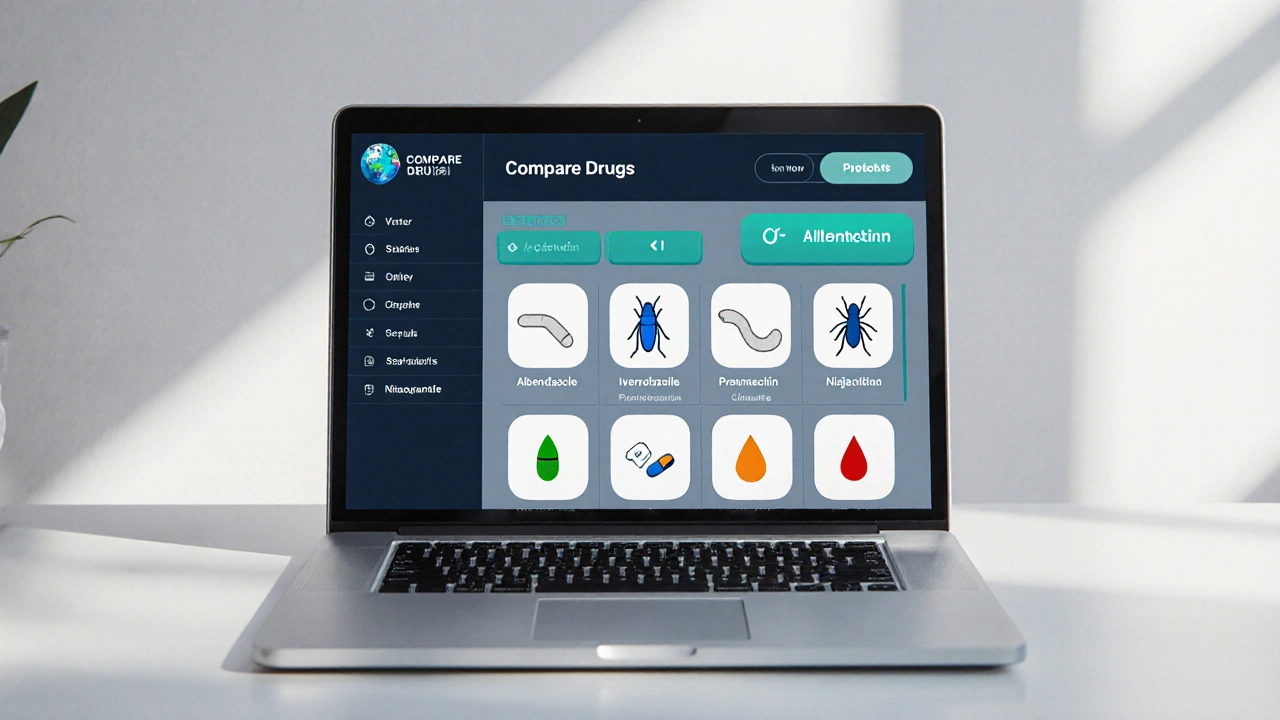Albendazole alternatives: Find the right anti‑worm medication for you
When you start looking at Albendazole alternatives, different drugs that can replace Albendazole for treating parasitic worm infections. Also known as alternative anthelmintics, it helps patients who need a different safety profile, dosing schedule, or parasite coverage. Albendazole alternatives encompass a range of chemicals, each with its own spectrum, typical dosage, and side‑effect profile. Choosing an alternative requires understanding the parasite type, infection severity, and patient tolerance. Mebendazole, an anthelmintic that targets roundworms, hookworms and whipworms works well for intestinal nematodes and is often preferred for children because of its low toxicity. Ivermectin, a broad‑spectrum drug active against many ectoparasites and some filarial worms shines when skin‑related or subcutaneous parasites are involved, and its single‑dose regimen is a big convenience factor. Praziquantel, the drug of choice for trematodes (flukes) and cestodes (tapeworms) offers rapid relief for liver fluke or tapeworm infections, but it isn’t effective against most nematodes. These entities connect in a clear way: Albendazole alternatives encompass other anthelmintic drugs, selecting an alternative depends on parasite species, and each alternative brings a distinct side‑effect and dosing profile. By mapping the spectrum‑to‑parasite relationship you can quickly narrow down which drug fits your case.
Key attributes and when to consider each option
For any anti‑worm treatment you’ll want to check four main attributes: spectrum of activity, dosage convenience, safety in special populations, and drug‑interaction risk. Spectrum tells you which worms the drug kills – Mebendazole covers most common intestinal nematodes, Ivermectin adds efficacy against lice and scabies, Praziquantel targets flukes and tapeworms, while Niclosamide, another niche option, is useful for tapeworms in the gut only. Dosage matters for compliance; Albendazole usually requires a multi‑day course, Mebendazole can be a single daily dose for three days, Ivermectin often works with a single oral dose, and Praziquantel needs a short, high‑dose regimen. Safety becomes critical for pregnant women, children, or patients with liver disease – Mebendazole has a long safety record in kids, Ivermectin is contraindicated in some neurologic conditions, and Praziquantel requires liver monitoring. Finally, interactions with other meds (like anticonvulsants or antiretrovirals) can shift effectiveness, so checking the patient’s medication list is a must. When you match these attributes to a real‑world scenario, the decision chain becomes simple. If a traveler returns with a hookworm infection, Mebendazole’s low side‑effect profile and short course make it a top pick. For a farmer dealing with livestock‑borne filarial worms, Ivermectin’s once‑off dosing and broad coverage are compelling. If a patient’s lab shows a liver fluke, Praziquantel is the only drug that hits that parasite effectively. And when a tapeworm is detected early in a pregnant patient, Niclosamide offers a gut‑restricted action with minimal systemic exposure. Understanding these connections helps you move from a generic “I need something instead of Albendazole” to a precise recommendation that balances efficacy, safety, and convenience. The upcoming collection of articles dives deeper into each alternative, compares them side‑by‑side, and gives practical tips on dosing, monitoring, and insurance‑friendly purchasing. Ready to see detailed comparisons, pricing guides, and safety checklists? Browse the posts below to get the exact info you need for a confident treatment choice.
Albendazole (Albenza) vs. Other Anti‑Parasitic Drugs: Comparison Guide
A side‑by‑side comparison of Albendazole (Albenza) with five common anti‑parasitic drugs, covering efficacy, dosage, side effects, cost, and when to choose each option.






